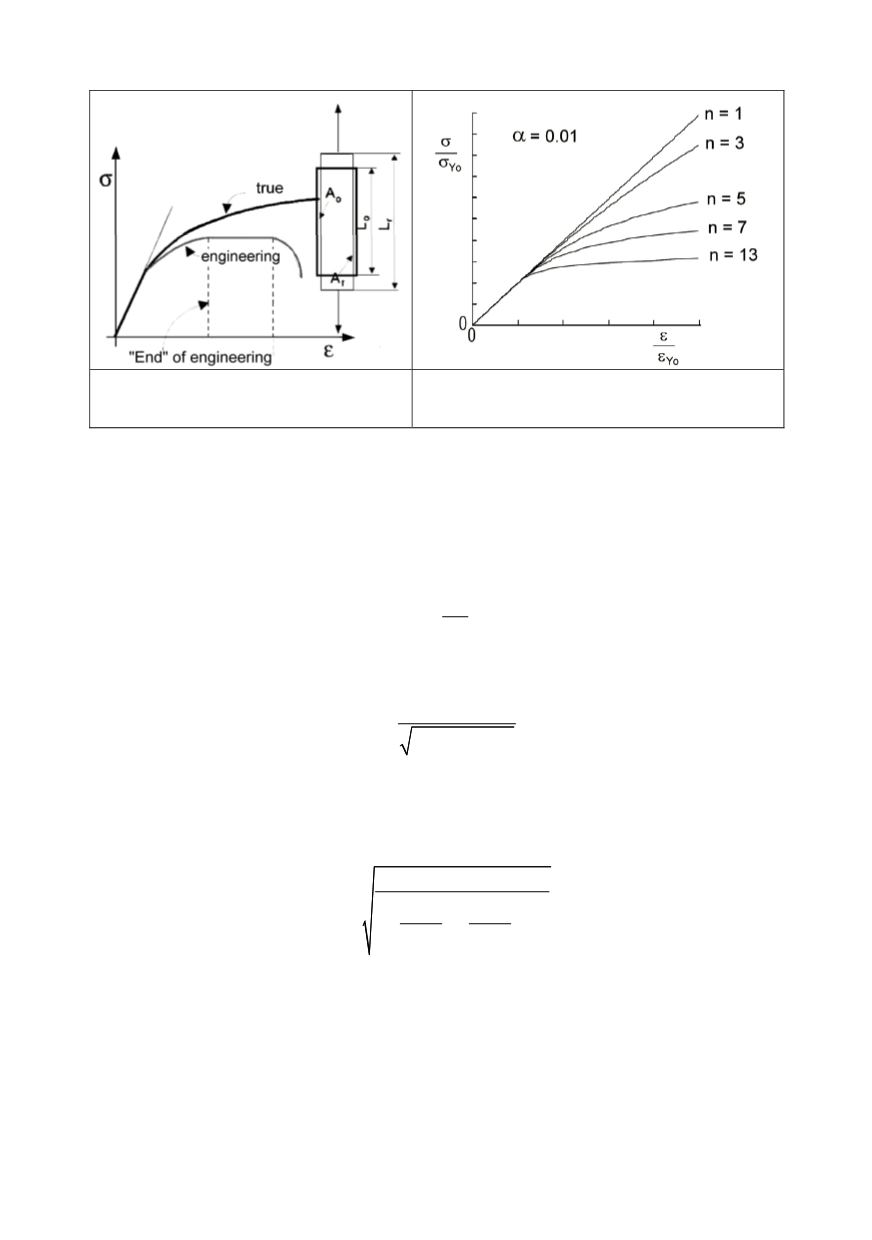

41
Figure 23. Different interpretation of
material yielding law based on tension data
Figure 24. Hardening parameter effect (linear
behaviour
→
n = 1, ideal plastic material
→
n =
∞
)
There exist different methods for the construction of this diagram, but here we want to
use for the presentation one of the simplest that is developed and verified for the design
of the ARIANE 5 Booster case by author. Since the majority of other FAD construction
methods is also less accurate, it is very reasonable to use this simple
and robust
method.
Abscissa of the FAD represents the plasticity effect. To this end the ordinate is given
as the ratio between actual nominal load
σ
and nominal load at the yielding level
σ
Y
r
Y
L
σ
σ
=
(36)
FAD ordinate is a measure of proximity to LEFM failure due to crack driving force
depending on plasticity level (
L
r
). Based on (22) this can be estimated by the relationship
(
)
r
e pl
K
E
σ
σ
ε
ε
=
+
(37)
It should be mentioned that designation with
K
r
should be not confused with the stress
intensity factor, because
K
r
is dimensionless value and represents factor of relative
reduction of critical fracture resistance characteristics (
K
Ic
,
J
Ic
,
δ
Ic
, K
R
) for given
L
r
value.
It follows after substitution from (36)
→
σ
= L
r
σ
Y
and material curve
σ
= B
Δε
pl
n
1/
r Y
r
n
r Y
r Y
L
K
L
L
E
E
B
σ
σ
σ
=
⎡
⎤
⎛
⎞
+ ⎢
⎥
⎜
⎟
⎝
⎠
⎢
⎥
⎣
⎦
(38)
Based on this solution corresponding FAD curve is designed in Fig. 25. Up to the
stress increase to about 70 % of yield stress the material resistance to fracture is not
changed, and after that there it is significantly reduced based on net section yielding.
Failure assessment diagram has been firstly proposed from Central Electricity
Generating Board (CEGB) in Great Britain, based on which the known R-6 method was
developed. From first publishing 1976 it passed different improvements and revisions and
today is well developed and include data necessary for practical application. However,
the results of calculation based on R-6 can be sometimes inadmissible conservative.


















